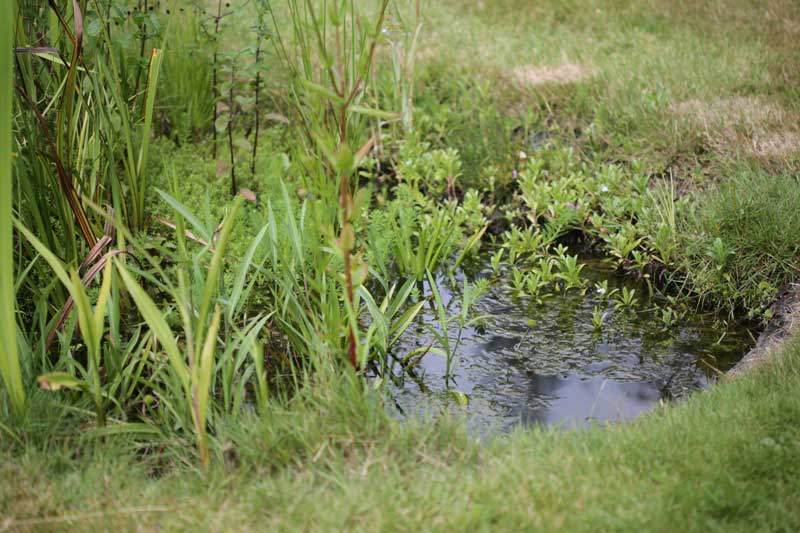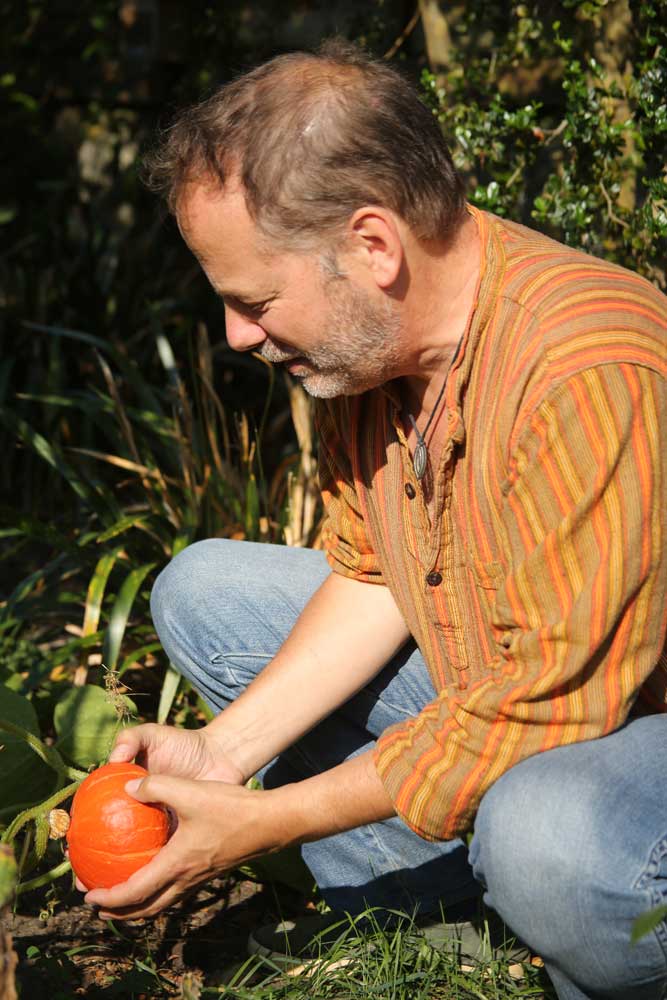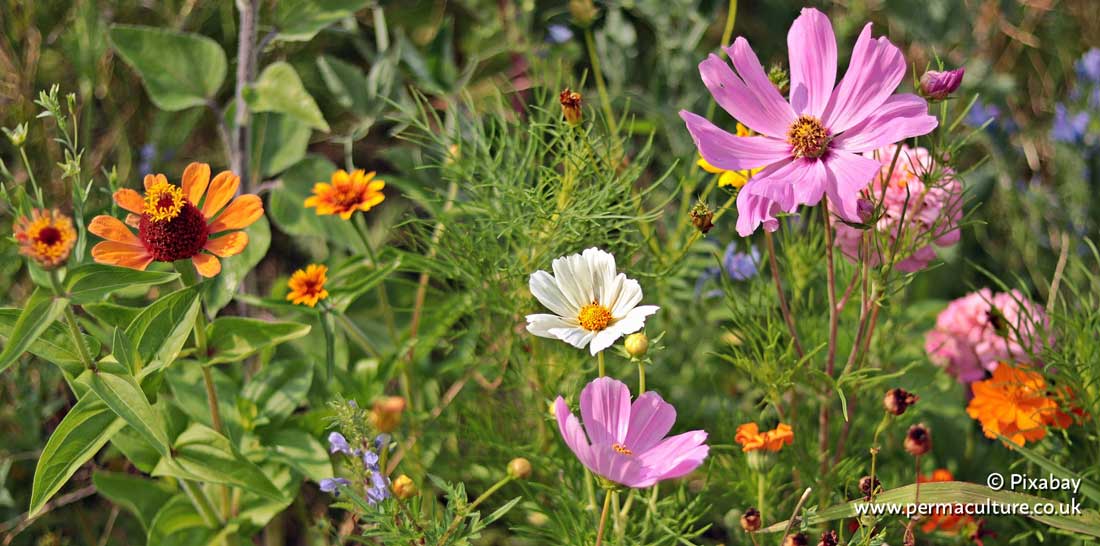It’s that exciting time of year when it’s time to look through the saved seed from last year (or leftover bought seeds) and decide what to grow this spring. There are always adjustments to be made. Some crops performed badly (last season was my first growing on South Downs chalk, rather than the sandy soils of Norfolk I am used to) and will either be omitted this year or grown in a different way; some did well but there just weren’t enough (onions, leeks); and, as I like to try something new each year, there will always be some that simply weren’t enjoyed much and not worth the effort of trying again (cucamelons and Cape gooseberry – just personal, you may love them!). Others did work well and will be scaled up (Turk’s Turban squash and Pink Brandywine beefsteak tomatoes). I also grew a new (to me) variety of sweet potato last year – Vineland Early Orange – which produced the largest tubers I have ever grown. I’ll definitely be trying this again and now have leftover tubers to grow my own slips later in the spring.
As a veganic gardener (derived from ‘vegan organic’, also known as ‘stock free’ growing) I don’t use animal products on my plot – so no blood, fish and bone or manures, for example. This is partly for environmental and welfare reasons, but also because with products like manures you never quite know what they contain. In many cases, the drugs livestock are treated with, such as antibiotics, growth promoters and worming medicines, are partly excreted in their dung. Some manures have also been found to contain glyphosate residues after the animals have grazed on areas treated with herbicides some time previously (or drift from nearby areas). I don’t want any of those things going into my soil and therefore the food that I eat. But that doesn’t mean I don’t encourage wild animals. Using natural predators is a key part of pest management on a veganic plot. So last year I built a large pond, made log piles, left an area wild, planted wildflower patches, left part of the lawn unmowed, created bug hotels etc., all the classic ingredients of a wildlife garden. And it worked; although I started with a bare plot, by the end of the summer the garden was alive with hoverflies, ladybirds, slow worms and numerous other allies.

I have been growing organically most of my adult life and veganically for well over 10 years and have found productivity to be the best yet. As expected it’s all about the soil and I use many tried and trusted techniques such as mulches, green manures, rotations, composting and no dig methods. I have come to learn how important it is never to leave bare soil where the nutrients can be washed away. So at this time of the year the soil is either covered with crops that have yet to be harvested (such as leeks, spring cabbages and purple-sprouting broccoli), perennials (strawberries, globe artichokes), mulches (compost, dead leaves, grass mowings etc.) or green manures.
My favourite green manure is scarlet clover which is nitrogen fixing, plus will add vegetable matter to the soil when it is hoed down to make space for crops or killed off by frosts. The stalks and leaves can simply be left on the surface as a mulch where they will be pulled into the soil by worms and gradually rot down. If I am planting big crops like courgettes or pumpkins I don’t even bother hoeing it but just make a space for the squash plant which will quickly grow above the clover. A further advantage is that scarlet clover produces beautiful flowers that bumblebees love. This can be sown anytime between late March and September and I routinely sow it whenever I have some bare soil during that period.
The area I’ve moved to has a huge number of garden snails (maybe they like the chalk for their shells) but I have found the ‘collect and relocate’ method works well to reduce populations. Start early in the season before they start breeding – a warm wet evening is best – and relocate them to at least 100 metres away (and not in someone else’s garden!). After a few nights of this you will notice the difference. The aim is not to wipe out the snail population completely – they are part of the ecosystem after all – but to reduce the carnage.
I do get a few aphids like most gardeners but by leaving them I attract the predators; ladybirds and their larvae, hoverfly larvae, lacewing larvae, parasitic wasps, beetles, earwigs and so on. A balance is soon achieved and without a few aphids to get the cycle started you wouldn’t get all the predators to help you. Another trick I use is to grow sacrificial companion plants such as nasturtiums which aphids also love.
My background is in science and ecology and I still love learning – often taking short courses and reading as much as I can – then adapting how I do things so that I am growing in a way that is best for the environment as well as for food production. Eight years ago I took a course in vegan permaculture in Somerset run by Graham Burnett (spiralseed.co.uk) and Nicole Vosper. This was an excellent course run over two separate weeks and we all made great friends. It was around this time that my daughter (Ella Glendining) started posting photos of her fabulous looking vegan meals on social media. She had such a great response to these that I suggested she produce a cookbook. The idea developed to include more about the growing of the food in the first place using veganic techniques, written by myself, and the result was The Vegan Cook and Gardener published in 2019 by Permanent Publications (publishers of this PM). The first half of the book is all about the growing techniques, the second half contains the recipes, month-by-month, using produce that is ready from the plot at that time, so it is both local and seasonal.
Since then I have become more involved with the excellent organisation Vegan Organic Network and am one of the regular panellists on their monthly Veganic Gardeners Question Time, broadcast live on YouTube, which has been running since the first Covid lockdown. This led me to find out more about Iain Tolhurst – the guru of stockfree growing – who runs Tolhurst Organic in Oxfordshire. Over several decades he has taken an area of stony low-grade land and converted it into a productive business supplying veg boxes and shops and employing people. All this was achieved using stockfree methods and his continual research, trials and record keeping has built up into a massive knowledge bank about the subject.
Other veganic growers, such as the American Jimmy Videle, have also amassed data over years of research and he has calculated that it requires just 3,500 square feet (0.08 of an acre) of planting space to feed one person for a year, including storage. That’s a little less than one and half allotment plots – far less than you might imagine and equates to a third of an acre feeding a family of four. If everyone farmed/grew this way we could feed the world with the healthiest diet and still have more than half the currently farmed land left to rewild.

I digress, back to the spring garden. Like many growers I get impatient at this time of year and want to get sowing at the earliest opportunity, but I have learnt that it is often better to wait till the appropriate time – some seeds sown in April can overtake the same variety sown in March which have suffered from a colder start. But I will still get going in February (in a heated propagator) with the crops that need a long growing season like peppers, chillies, aubergines and tomatoes. Broad beans can also go in early if they weren’t autumn-sown and under cover I’ll get cabbages, cauliflower and carrots going as early as February. If you don’t have a greenhouse or polytunnel then you can still start these off in seed trays in a conservatory or even a windowsill indoors.
Once we’re into March a lot more can be sown under cover such as broccoli, Brussels sprouts, celery and leeks and into the ground can go onion sets. Then as we head into April things really get going with sowings of squashes, cucumbers, French and runner beans, kale, peas, spinach, swede and so on, while potatoes can go into the ground. I haven’t decided yet what new things I am going to grow this year, but I know I want to give chickpeas another try – if only for their beautiful foliage. Whatever you grow this year I hope you enjoy the process and find some new crops you enjoy eating.
Piers Warren is a conservationist, author and keen grower of organic fruit and vegetables. He is the founder and Principal of Wildeye – The International School of Wildlife Film-making – and has written a dozen books, including the bestselling How to Store Your Garden Produce, plus hundreds of magazine articles. He has a long interest in self-sufficiency and permaculture and is convinced that growing your own food and following a vegan lifestyle are important contributions to lowering your carbon footprint and living more lightly on the Earth.
Piers’ book, The Vegan Cook and Gardener, and Graham Burnett’s The Vegan Book of Permaculture are available via PM’s online shop: https://shop.permaculture.co.uk











